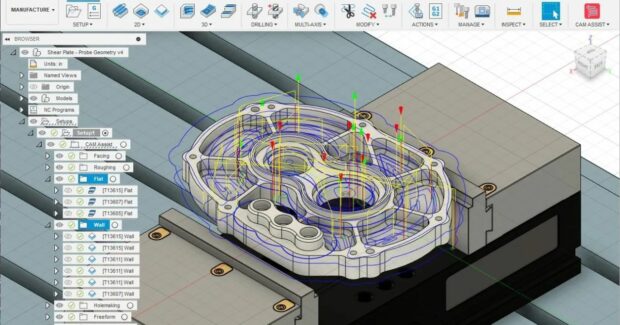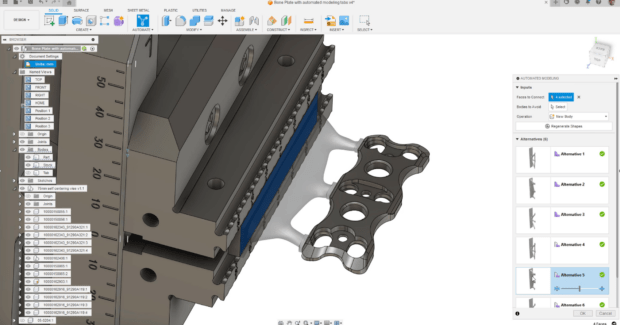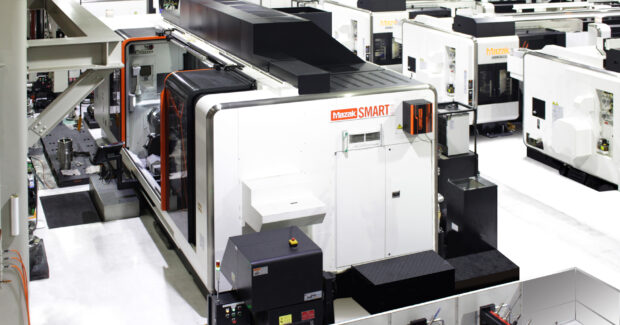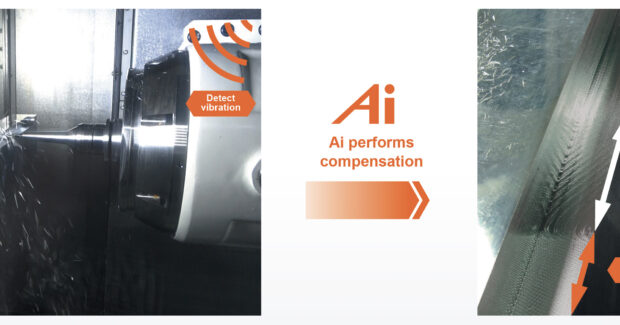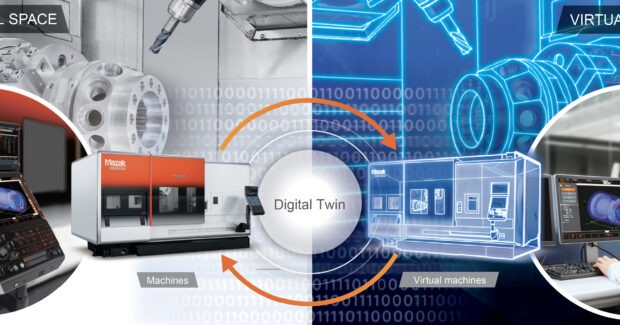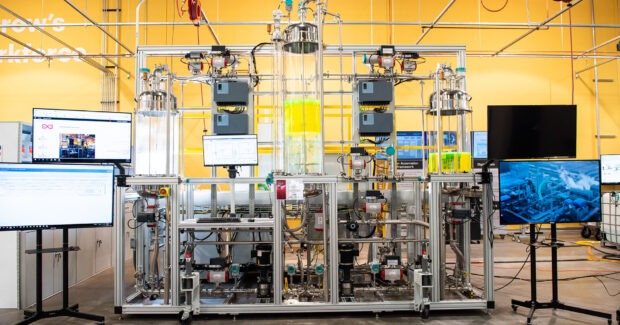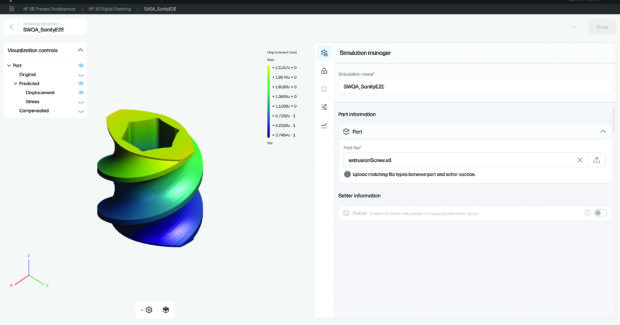State of the Industry: Digital transformation, AI & Cybersecurity
Still on the fence when it comes to utilizing digital solutions in your shop? Considering being part of the next wave of solutions to remain competitive. It turns out, the road to AI results in practical value for shops of any size.
Posted: January 3, 2024
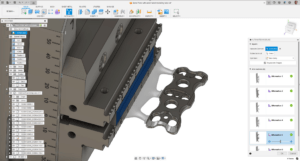
No one knows better than you do where the major pain points exist within your operations. And you are completely aware that digital tools — artificial intelligence, generative design, spindle health monitoring and other capabilities — offer solutions to overcoming these challenges. But with a focus on keeping the lights on and getting products out the door, it can be difficult to dedicate meaningful time reviewing digital transformation tools.
What is the best way to cut through the hype and realize the benefits of these tools? There are a few things to keep in mind as you navigate the road to AI. By first identifying the concepts or problems you want to solve within your shop you can effectively start implementing AI and/or expanding the use of digitalization in your processes.
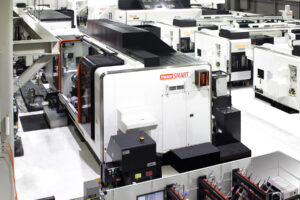
A good starting place is to undertake a digital project that results in a “win,” generating results quicky, as opposed to a full scale implementation of tools and solutions. “What are the challenges and what are the technologies you need to invest in to help, not just in innovation, but also the adoption of those technologies,” said Federico Sciammarella, chief technical officer for Manufacturing x Digital (MxD), which is a partnership with the U.S. Department of Defense that assists factories with digital and cybersecurity tools.
Sciammarella said an initial step in a machine shop, for example, would be to measure coolant temperatures in machines or measure the temperature inside a spindle set. “These steps provide a line of sight and visibility into something that is impactful,” he said. “But, what else can I do if I am collecting data on machining time or vibration?” Can you then start to predict when a tool is going to wear out or start to make bad parts?
Once shop owners can see how digital tools assist their processes, they can begin scaling up with additional solutions, Sciammarella noted.
“I think what makes tradespeople strong is our ability to look at the power of a tool and look at it in a very practical sense,” said Al Whatmough, the director of product management, design and manufacturing for Autodesk, which makes the Fusion Industry cloud for manufacturing, connecting the entire life cycle of a product’s development. He is a former machinist and instructor. “Oftentimes, the first time somebody buys a tool they think of all the different ways they’re going be able to use it in unconventional ways.”
Generative Design Will Create Unprecedented Efficiencies
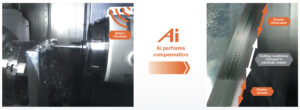
As an example, Whatmough discussed the evolution of parametric modeling. In the days of early software modeling, such as AutoCAD, product developers were mimicking the drafting board. With today’s parametric modeling, such as Autodesk’s Fusion software, designers can think about the “intent” of their designs as opposed to “defining” the outcomes. Generative design is a tool that allows designers and product developers to envision alternatives for 3D product design. Inputs for generative design include the material, weight, performance, strength and cost. In addition to cost savings, the promised benefits of generative design include an optimized product that is on its way to the market faster because the designs can self-adjust and self-optimize based on the data it learns. According to a Deloitte manufacturing outlook for 2024, “generative AI is expected to hold immense potential in areas such as product design, aftermarket services, and supply chain management; … and could serve as another tool for navigating a challenging labor market.”
AI tools automate the mundane tasks of the design process by deploying a computer to do these functions. “And this is always at the heart of automation,” Whatmough said. “You’re trying to take the mundane tasks and automate them so the human can think about a higher order skill. And we’re making this tool more accessible to a larger group of people.”
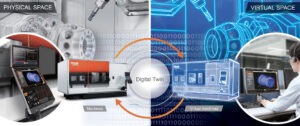 Fusion also allows designers to automate the grouping of toolpaths or the deployment of several part drawings. “We have certain toolpaths that are very refined for getting steep areas of a part or certain toolpaths that are very refined for cutting the outside profile apart,” Whatmough said. “It self-selects its intent.” Autodesk is working on whole part strategies, which will automatically pick the appropriate toolpaths across an entire part.
Fusion also allows designers to automate the grouping of toolpaths or the deployment of several part drawings. “We have certain toolpaths that are very refined for getting steep areas of a part or certain toolpaths that are very refined for cutting the outside profile apart,” Whatmough said. “It self-selects its intent.” Autodesk is working on whole part strategies, which will automatically pick the appropriate toolpaths across an entire part.
Machine Monitoring and Spindle Health
Devices and tools to monitor machine health aren’t new, but advances in AI open the door to new opportunities. In fact, monitoring machine health is one of the leading areas where digital solutions and AI are at play. “Spindles are the most expensive piece on the machine, normally,” noted Joe Sander, Mazak’s sales engineering assistant manager in charge of the automation group. The company is a leading provider of machining solutions. “Spindles run from $20,000-to-$120,000 so that is the first point of the machine we wanted to look at.”
Mazak’s Spindle Health Monitoring System uses an AI algorithm to predict the health of a spindle so customers can trend when it starts to lose its ability to keep a position when cutting a part, and where it starts to lose tolerances. At that point, information is sent to an edge device, such as the Mazak SmartBox, which is installed on a machine. Customers can segment the data collected into feature extractions.
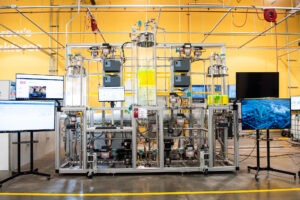
The process runs each time a machine is started in order to prevent operators from running a bad spindle on expensive parts. Further, after a collision, you can see how the system is performing. “Do you have an imbalance situation after the impact?” Sanders asked. “Do you have a bearing chip that will cause your run out to be higher?”
Mazak offers a complete solution regarding the management of the machine data collected, meaning that customers don’t need to purchase a third-party solution or develop something in house to monitor the data. The information is reportable back to a dashboard, which can be monitored from a computer located in an office or at the machine control itself, or anything hooked up to the network.
Sanders said spindle health is the first point of machine health Mazak wanted to review. “This system is expandable to the ball screws to do a complete machine analysis rather than just one piece,” he added.
Mazak is also underway with the next generation development of its SmartBox (available this year), which is a gateway and a platform to provide security and data transfer from machines, as well as open up data streams, depending on the protocol employed, noted Lem Linder, Mazak’s national applications manager. He assists customers with machine monitoring and focuses on the MTConnect communications standard, which enables different types of machinery to share data with different computer systems using XML-based messages. When it comes to machine monitoring and MTConnect, Linder advises customers to start slowly and determine what types of data they want to see and what value they can derive from machine monitoring.
Cybersecurity Strategies are Necessary to Safeguard Operations
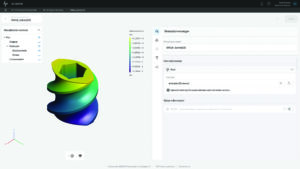
With all the data you will be generating from machine monitoring, as well as the developments through generative design, comprehensive cybersecurity strategies are a critical part of the process. “You’ve got to make that time and investment because manufacturing has been the No. 1 [cyber] target for the last several years,” Sciammarella said. Prior to the pandemic, manufacturing ranked 19th regarding cybersecurity breaches; today it is the No. 1 targeted sector, Sciammarella pointed out. The manufacturing sector was the most targeted regarding ransomware attacks in 2022, which marked the second consecutive year, according to an IBM report.
“I always say to start with the easy things, and we have some of those tips on our resource hub,” Sciammarella said. MxD’s resource hub includes a link to a marketplace where users answer questions to determine their cybersecurity posture. As part of the information, users are offered tips on developing plans in the event security is breached. “Just spending an hour or two each week on these topics will help you feel like you are making progress,” Sciammarella added.
These cybersecurity concerns can make a metalworking shop hesitant to embrace digital solutions and the cloud. However, metalworkers are advised to embrace cloud-based solutions because they are effective and deliver value much faster, said Arvind Rangarajan, HP’s global head of software and data, personalization and 3D printing. HP recently announced a strategic collaboration with Sandvik to develop advanced materials for 3D printing. Rangarajan said by not connecting devices and sharing data, you are basically handicapping your operation from leveraging the value you could gain.
Rangarajan advised shops to explore, understand the technologies, and ask questions. “Vendors are doing many things to ensure the safety of your data in the cloud, making it the right time to invest,” he said. “It’s been slow going, but I think we are at a tipping point with technology, and I think manufacturers who are adopters are going to win out. Once you see the ROI you are going to continue to invest.”
Rangarajan said digital transformation is a fast moving space and it is important to stay informed. “If your shop has an AI evangelist on staff, empower this person because they will be the drivers of change when it comes to digital transformation,” he said.
Remain Competitive in an Evolving Landscape
If you are not making chips, you are not making money with your machine, Sanders noted. “A lot of the options we are offering and the connectivity we are offering allow you to engineer quickly, get your models to your machine and get them tooled up and ready to go faster,” he said. “That way you are more productive, and you are making more chips.”
Embrace the future by implementing digital tools and working with your supplier partners to address your pain points. “Yes, you are a machinist and you cut parts, but another part of your job is probably going to be understanding how to secure your networks and connect,” said Mark Collins, Mazak’s senior automation electrical engineering coordinator. “Otherwise, you are not going to be able to move forward with this technology and all the benefits that are going to come.”
There is practical value for shops of all sizes to automate processes by connecting tools, which allows you to layer automation into those connections, which creates more benefits. “I would personally encourage the smaller shops who have the ability to be even more nimble to dive in,” Whatmough said.
Software models and tools are more accessible through the cloud. “You can take the tools and generalize their use, stringing them together,” Whatmough said. “It becomes far more exciting. As the tools become more accessible, you can rethink how you string together processes.”





